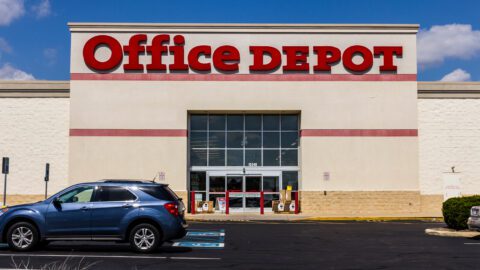Retail has long been known as an industry suffering from high employee turnover rates, and in fact, retailers/CPGs have the second-highest turnover rate across industries at 13% per year, according to LinkedIn research. For hourly store employees, this total has been estimated to be as high as 65%.
Can retailers slash these high employee turnover rates? A Deloitte exec shared three steps to address the problem, by enabling retailers to build a digital workplace based on interconnectivity between departments:
- Provide employees with a ‘consumer-grade’ experience;
- Personalize via employee demographics, location and position; and
- Workplace flexibility.
These steps go beyond using workforce management (WFM) solutions. While these platforms can help retailers manage their employees, they’re often limited when it comes to providing an engaging experience, according to Jay Reilly, Senior Manager of Business Development for Deloitte/ConnectMe.
“The retailing focus, at least from our perspective, is that they are very intent on continuing to compete, as well as keep customers happy,” Reilly said in an interview with Retail TouchPoints. “Lost in some of that is the well-being of their employees.”
Retailers need to understand that reducing high turnover rates within stores requires action from the top down, and that communication between all departments is vital. At the same time, the stores are not the only areas experiencing these issues, so retailers cannot afford to neglect their distribution centers and corporate offices.
“It’s the HR professional that is tasked with being able to push content and access to the employees that is relevant and personalized,” Reilly said. “It’s the employee on the floor that may have a question about changing their benefit status. It’s the manager tasked with managing their team. There are all kinds of competing tasks that all these people have to do, whether it’s generating revenue or customer service, but employee satisfaction can’t be left out of it.”
Providing A ‘Consumer-Grade’ Experience For Employees
When it comes down to it, all employees also are consumers, so retailers must think like shoppers when building a workplace environment suitable for their needs. Merchants must give employees the right technology to have all the information they need to succeed. Retailers are improving in this area — 42% of retailers currently offer mobile solutions for associates; within three years, 78% of retailers plan to offer these tools, according to a survey from BRP.
“Employees use their own smart devices, whether it’s a phone or tablet, and applications on those devices in their personal lives, so they expect that and need that type of tool in the workplace,” Reilly said. “Generally, they don’t get it” in a retail work environment.
Use Personalization Tools To Provide Employees With Context For Their Jobs
Retail employees also are likely to need context into the jobs they are performing on a day-to-day basis. Personalized dashboards that contextualize knowledge articles, task lists and content based on an employee’s role, location and job title can improve the workplace for retail employees, all while making the job less confusing.
“Thanks to Amazon, people expect their preferences to be known, and information that they get back to be related to those preferences,” Reilly said. “In the employee workplace, a lot of retailers don’t provide that level of personalization for their employees. It’s very general information that they provide their employees, so the employees wonder, ‘Do they really care about me?’”
Embrace Workplace Flexibility Through Consumer-Style Communication Channels
As many as 77% of companies believe that email is no longer a viable tool for effective communication, according to a survey from Deloitte and Facebook. With that in mind, retailers must be more conscious of the communications channels they are using to interact with shoppers, especially when it comes to manager-to-employee interactions or scheduling.
“The Internet is always on for consumers,” Reilly said. “They want to be able to interact with their company where, when and how they want to.”
The 4 Causes Of High Turnover In Retail
Although poor training may drive many employees away, Reilly narrowed retail’s turnover rate down to four specific variables:
- Employee isolation; in which the company is indifferent to the employee’s well-being and career path;
- Inability to provide the proper tools to employees that provide a fulfilling experience;
- Lack of timely access to information, making it difficult to find answers to requests and problems; and
- Interactions between employees and retailers still aren’t personalized.
“We’re finding that the money has been spent in technology in CRM and ERP systems, but the retailers haven’t spent as much in HR systems to create that digital workplace,” said Reilly. “If a digital workplace does exist, that improves employee productivity.”













